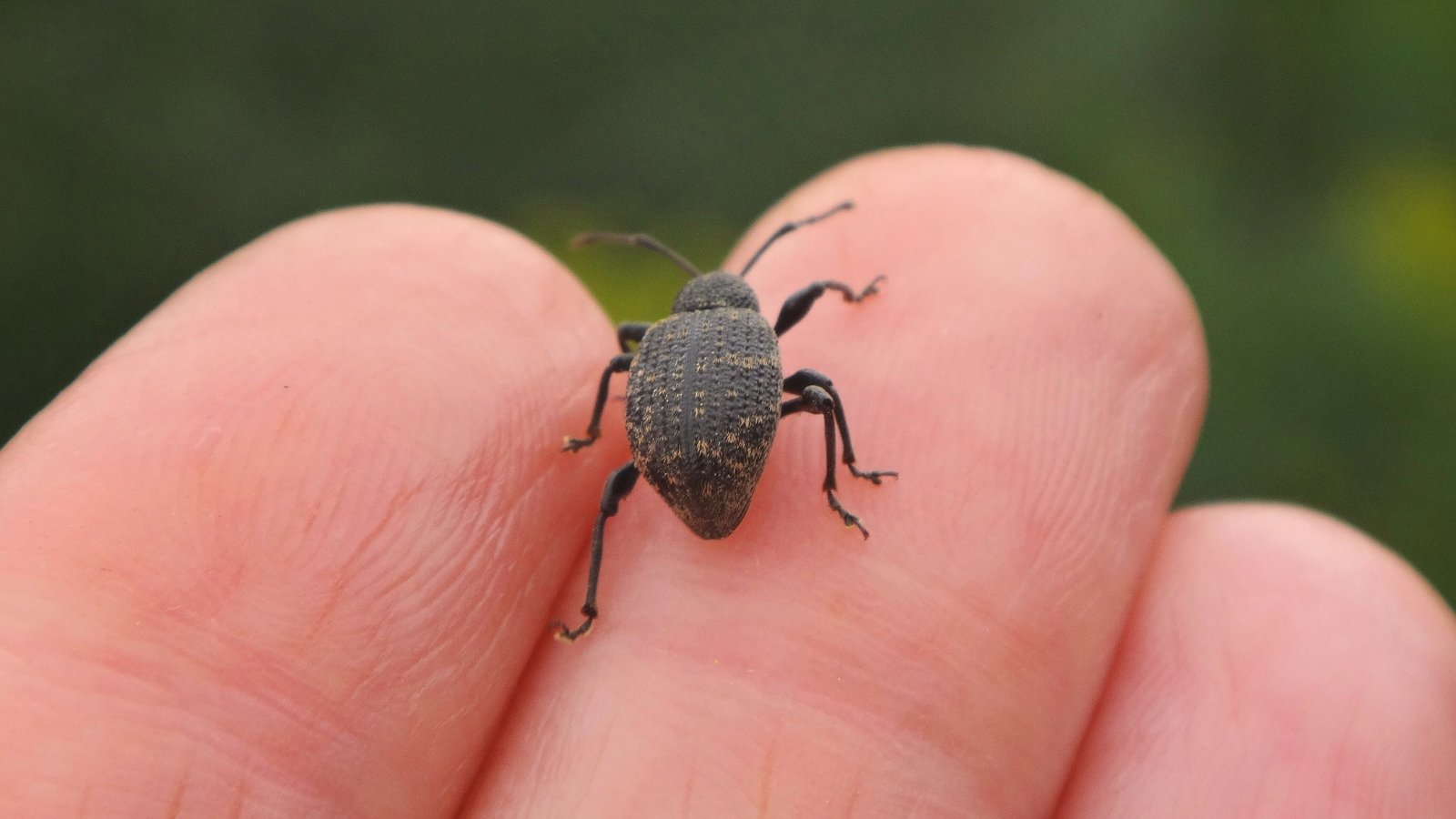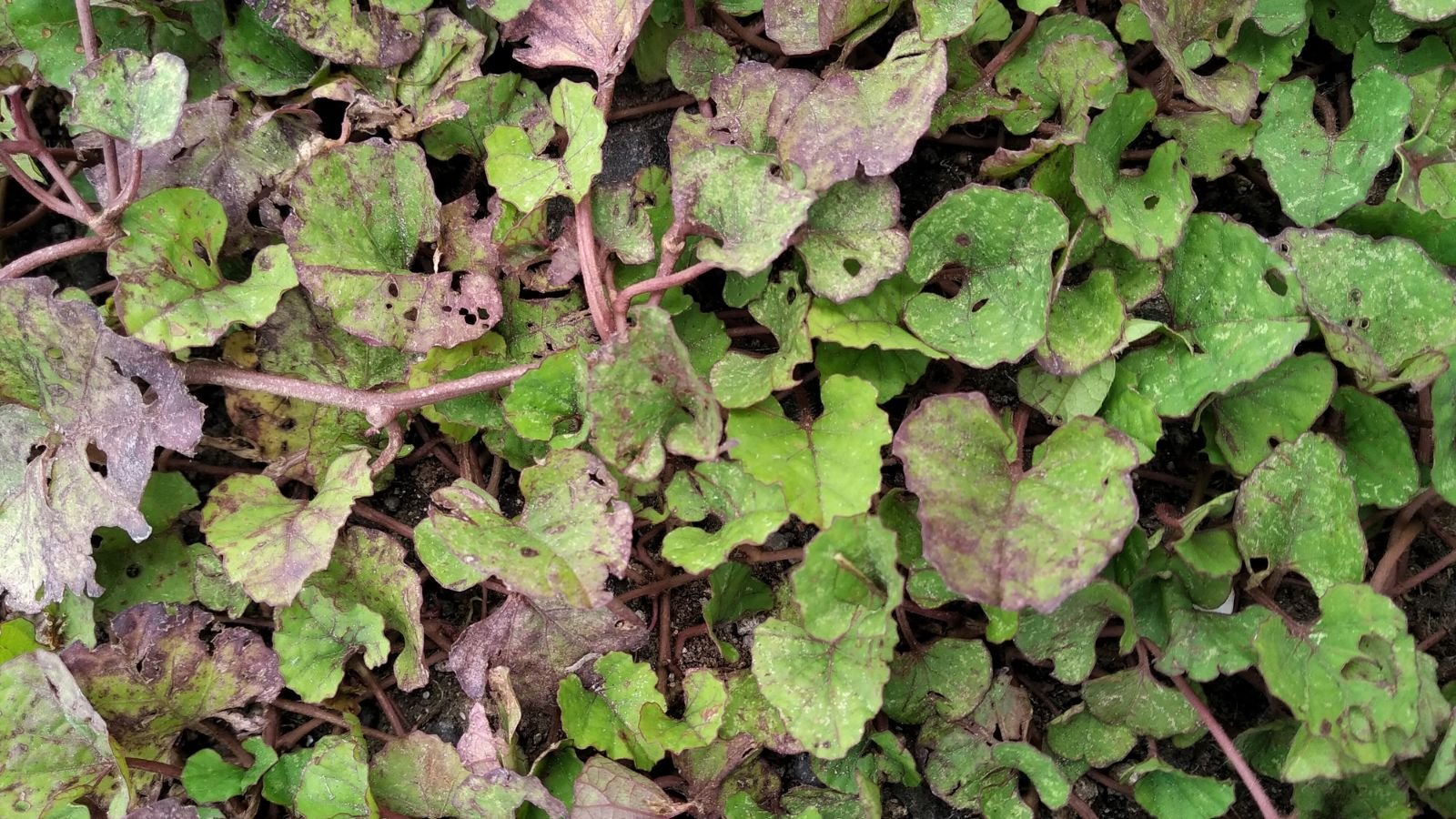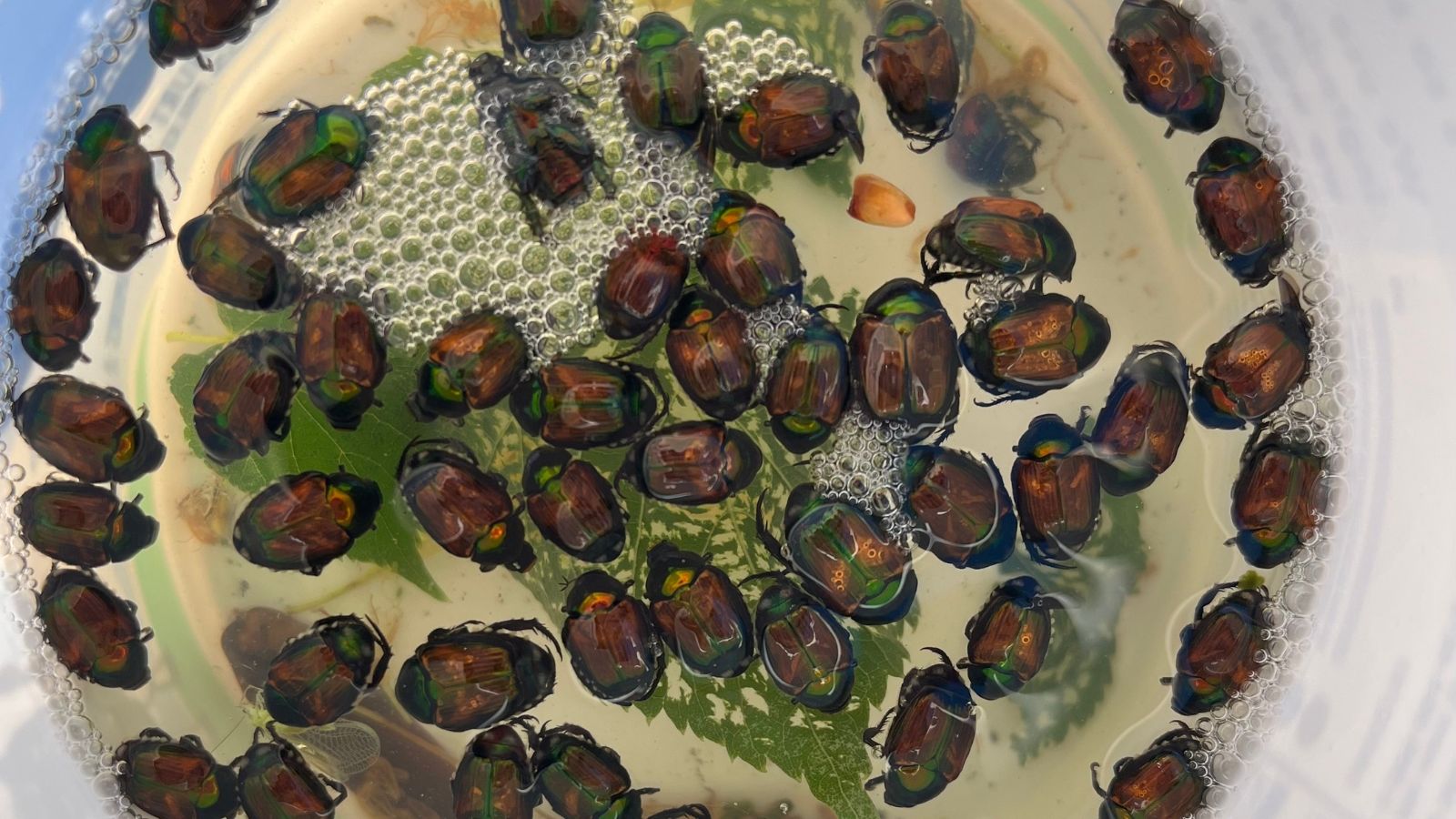PROTECT YOUR DNA WITH QUANTUM TECHNOLOGY
Orgo-Life the new way to the future Advertising by AdpathwayIt doesn’t get much better than a perennial that’s hardworking, ornamental, versatile across conditions, and also a North American native species. Heuchera is a favorite low-grower with striking foliage and delicate flower sprays. Beautiful under tree canopy, coral bells grow in varying sun exposures and moisture conditions with ease.
Heuchera americana has attractive green leaves and forms a gentle groundcover. Cultivars in lime, purple, bronze, black, and red bring high visual interest and contrast. In addition to the bold foliage, sweet bloom sprays in pinks, corals, and reds rise in summer. The leaves have rich mottling and venation. Because we appreciate their vibrant foliage, it’s a disappointment to see damage from nibbling pests among the tapestry.
Fortunately, pests seldom plague heuchera. But, they aren’t immune to common garden pests. Ensuring the best cultural conditions offers a strong foundation for overall health. Diversify plantings to attract beneficial insects that become natural pest managers. Predatory insects like lacewings, hoverflies, and ladybugs are the first line of defense as they prey on common garden pests.
If you find foliar damage, there are several primary offenders to scout. Here, we’ll look at pests most likely to impact coral bells, as well as how to prevent and treat them.
Vine Weevils
 Adults leave unsightly leaf damage, but the crown-eating grubs are actually the most harmful.
Adults leave unsightly leaf damage, but the crown-eating grubs are actually the most harmful.Vine weevils are a group of beetles that feed on roots in the grub stage and on leaves in the adult stage. They feed on a host of ornamentals and favor Heuchera species, as well as strawberries, sedum, and primroses.
While leaf damage from the adults in spring and summer is unsightly, it’s the grub phase that is most damaging. Grubs are active in fall and winter when they burrow into the crowns to feed on roots. Their continual feeding causes damage, weakness, and an eventual inability to thrive.
Signs of weevil infestations include wilting stems between fall and spring. If you suspect a problem, dig the plants to inspect the roots. You’ll see the white grubs, curved in a “C,” between the roots.
Leaf damage from adults presents as irregular margins. You may see the insects in the area; the adults are small, gray beetles with muddied yellow markings on their wings.
Treatment
 Beneficial nematodes can help control this pest.
Beneficial nematodes can help control this pest.To displace adult beetles (therefore reducing the larval population), try handpicking them off stems and leaves when they’re active in the evening. By day, they hide under leaf litter and debris. Sticky traps may be effective and a good indicator of the specific pest doing the damage. Or try shaking the plants gently at dusk over newspaper or cardboard to displace the insects for removal.
Beneficial nematodes applied in the summer can establish themselves to feed on larvae. Available commercially, water the nematodes in to activate the microorganisms while temperatures are above 45 but below 85°F (7-29°C). Offer the treatment from early to late summer at three-week intervals.
Nematodes
 These nematodes are actually harmful and leave yellow-brown lesions on leaves.
These nematodes are actually harmful and leave yellow-brown lesions on leaves.Foliar nematodes (not the beneficial ones) are other potential Heuchera pests. The slender roundworms are difficult to see with the naked eye, but they damage the upper growth and spread quickly. The first sign of foliar nematodes is yellow-brown lesions on the leaves between veins. These spots start on the lowest leaves and work their way up. They’ll eventually cover the entire leaf, which dries and drops prematurely.
Foliar nematodes climb or swim up stems after rain or irrigation. They use water channels to travel up and enter the leaves for feeding. Their damage may kill coral bells. One of the tricky indicators for nematodes is that the initial lesions and outward signs mimic fungal diseases, masking the true source.
Nematodes overwinter in the soil and debris from affected specimens. Good garden cleanup is the best practice to prevent harboring pests. Apply a layer of mulch around the base of the plants to prevent water from splashing onto stems and leaves. This lessens access for the nematodes. Water at the soil level, whether by hand, drip irrigation, or soaker hoses, to avoid wetting the leaves.
Treatment
 Insecticidal soap can be useful.
Insecticidal soap can be useful.Nematodes spread readily and dwell for years in debris, making it best to remove and discard severely infected specimens. Dig out the surrounding surface soil, too. Dispose of the material away from the garden and keep it out of the compost pile.
Insecticidal soap may be useful as a treatment, but it hasn’t proven useful in every case. In severe cases, spray surrounding plants, too, to catch nematodes before they enter the tissues of otherwise healthy selections. However, removing damaged plants is your best bet.
Mealybugs
 Avoid fertilizing too much, as this can fuel mealybug infestations.
Avoid fertilizing too much, as this can fuel mealybug infestations.Mealybugs are soft-bodied pests with waxy white, cottony, fibrous bodies. They move slowly and congregate on the undersides of leaves and along veins.
Inspecting the leaves, you’ll notice the insect along with yellowed, wilted, and stunted leaves. The coral bells may show general decline. Mealybugs are sapsucking insects with piercing mouthparts to feed on plant parts and lay eggs in cellular tissues. The larvae feed as they hatch, continuing the cycle.
Mealybugs leave behind a sticky honeydew residue. An attractive black sooty mold develops in humid conditions. Early mealy infestations are easy to control, but if not caught, they’re challenging to get rid of entirely.
To prevent mealybugs, aim for consistent moisture during the growing season and a site with good sun exposure, at least in the morning, for coral bells. Avoid fertilizing too much, as the Heuchera pests feed on tender new growth with high nitrogen levels (excess fertilizer promotes both).
Treatment
 Neem oil is a reliable, natural spray.
Neem oil is a reliable, natural spray.Spray the leaves and stems with a stream of water to dislodge the insects. Horticultural soap or oil, like neem, applied to both sides of the leaves, mitigates outbreaks. Insecticidal soap is a proven remedy for this pest.
For a single specimen, like a potted accent, it may be feasible to dip a cotton swab in isopropyl alcohol to wipe the stems and leaves (usually too tedious for larger arrangements). The alcohol wipe instantly reduces small populations.
Japanese Beetles
 They enjoy a range of ornamentals, including coral bells.
They enjoy a range of ornamentals, including coral bells.Japanese beetles may become a Heuchera pest if they’re active in your area. The beetles feed on leaves and cause them to turn yellow and drop. Their voracious appetites can also skeletonize the leaf completely.
Beetle populations increase in numbers for several weeks in the summer, depending on their local activity. Roses and fruit trees are Japanese beetle favorites, but they enjoy a range of ornamental and edible crops.
Treatment
 Drown them in a bucket of soapy water.
Drown them in a bucket of soapy water. In the active season, spray the leaves and stems with a stream of water to displace the beetles. However, unlike soft-bodied pests like mealybugs, this only serves to move them to nearby areas. To control the beetles, handpick small populations or gently shake the branches. Drop them into a bucket of soapy water for disposal.
Treat the surrounding soil in areas where Japanese beetles are known to be active with two treatments of beneficial nematodes. Space the applications two weeks apart in the warm season, when temperatures are between 45 and 85°F (7-29°C).
Slugs
 These annoying, slimy pests leave ragged holes in foliage.
These annoying, slimy pests leave ragged holes in foliage.Slugs sometimes slide among the showy leaves, feeding on tender new growth. You may see the creatures in their most active times of evening or early morning. Or, you’ll notice their rasping holes in the leaves.
Treatment
 Handpick them or lure them, then drown in soapy water or beer traps.
Handpick them or lure them, then drown in soapy water or beer traps.Scout in the morning or at dusk to hand-pick slugs from the leaf surfaces. In the middle of the day, they tuck in under leaves or on the mulch and soil around the crowns. Lure them with lettuce leaves or citrus rinds in the evening, and collect them in the morning. Place a board near the base of plants to serve as a hiding spot. Lift it to collect and remove the slugs. If numbers increase, bait them with beer or soda traps by filling a shallow dish and placing it at soil level.
Remove mulch from around the base to stave off protective hiding spots. Target irrigation to reduce moist conditions, which are an inviting habitat for slugs. Drip irrigation at the base delivers water directly to the roots without wetting the overall surface area. Diatomaceous earth scattered around the stems contains sharp particles that harm soft-bodied creatures as they crawl. Reapply after rains to maintain the boundary.


 1 week ago
13
1 week ago
13





















 English (US) ·
English (US) ·  French (CA) ·
French (CA) ·